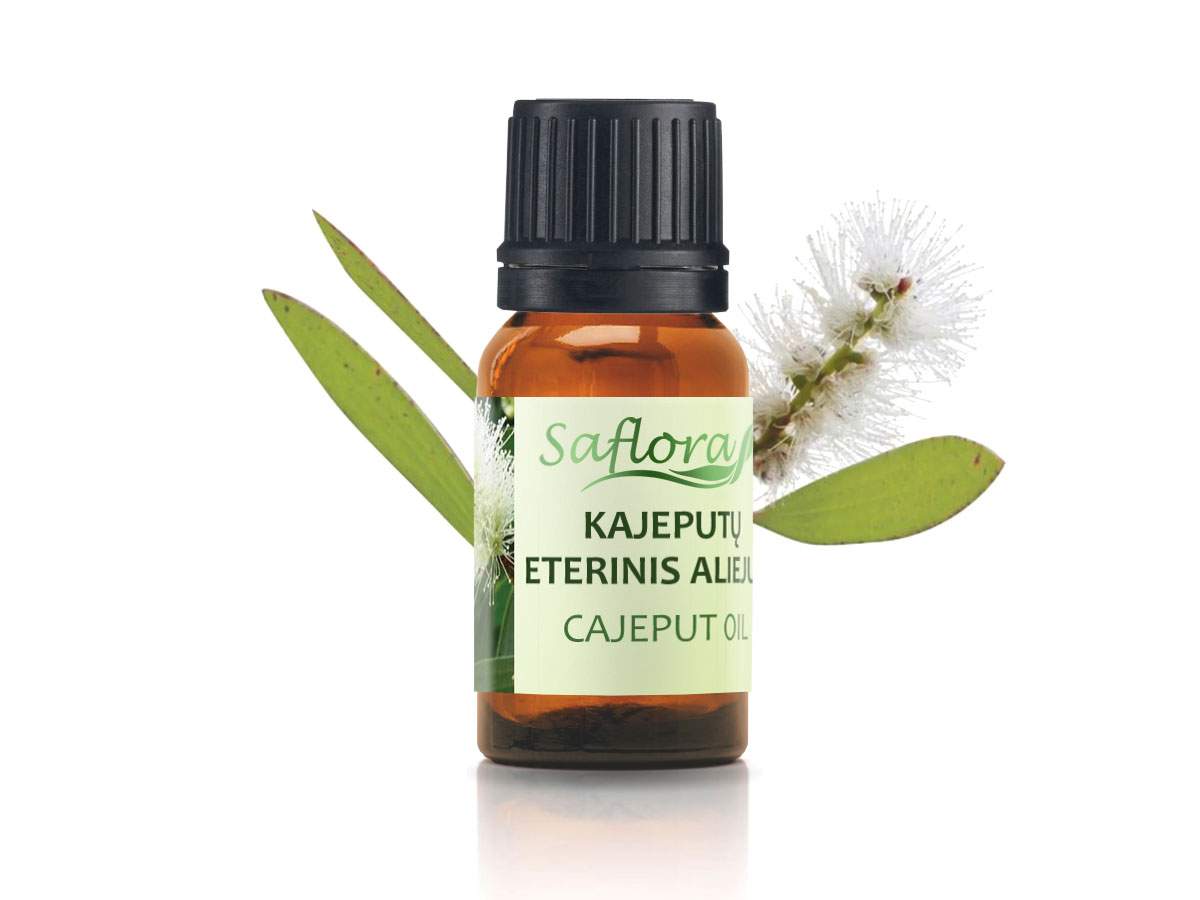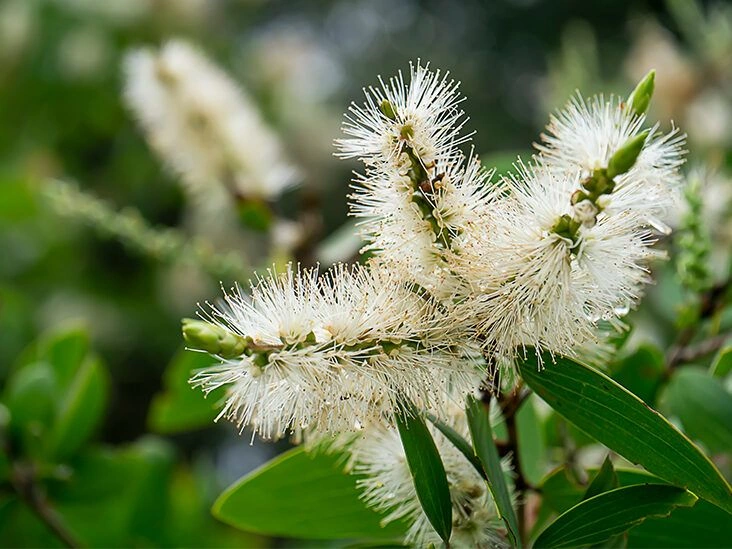Cajuput essential oil is obtained by distilling the leaves and twigs of cajuput trees. It’s associated with a number of potential health properties and may support the condition of skin and hair.
Cajuput grows naturally in tropical parts of Australia and Southeast Asia. It’s known by several names, including cajuput, kajuput, Melaleuca cajuputi, and minyak kayu putih.

The oil is most commonly recognized for its antiseptic properties. It’s also regarded as having anti-inflammatory effects and is sometimes applied to minor skin injuries, colds, and inflammatory skin conditions.
Although often labeled a natural remedy, cajuput oil can be potent, similar to conventional medicines. As with all essential oils, it should be mixed into a carrier oil before topical application.
Read on to learn more about cajuput oil’s uses and safety considerations before trying this essential oil yourself.
Potential benefits of cajuput oil
It’s important to balance claimed benefits of cajuput with the extent of current research. Here’s what evidence so far suggests.
Cajuput oil for skin
Cajuput oil has primarily been identified for its antiseptic action. A 2022 study observed antibacterial activity in laboratory testing, which could help reduce infection risk.
Though not definitively proven, cajuput may also assist in loosening mucus in the airways and easing bronchitis symptoms. Additional research is required to verify these effects.
Cajuput oil for hair
Advocates of cajuput oil promote its therapeutic qualities for hair care, suggesting benefits for scalp health and possibly supporting hair growth. However, solid evidence that cajuput treats hair loss or specific scalp disorders is lacking.
Other suggested uses
Cajuput oil is also touted across natural health sources as potentially helpful for a variety of conditions, including:
- muscle and joint discomfort
- tooth pain
- sinus issues
- the common cold
- coughs and other respiratory problems
- anxiety and stress
However, there isn’t sufficient scientific proof to confirm these applications. Consult a healthcare provider before using cajuput oil for medical reasons.
Cajuput oil and COVID-19 research
While global researchers continue to develop vaccines for COVID-19, some investigations have explored other strategies to reduce infection risk.
One study examined whether cajuput oil could help prevent COVID-19. The researchers were motivated by the oil’s known antiseptic and anti-inflammatory characteristics.
They tested extracts of cajuput oil against human proteins commonly targeted by this coronavirus.
The findings indicated some activity that might inhibit the virus, but cajuput oil was not definitively shown to block the coronavirus from entering cells.
Further studies are necessary to determine potential methods of using cajuput oil for this purpose and how any effects might vary among age groups and populations.
Cajuput oil versus eucalyptus oil
Eucalyptus oil is a more familiar essential oil. Cajuput shares a similar fragrance with eucalyptus, which carries a pronounced medicinal scent.
Both oils are used topically for their antiseptic qualities.
Eucalyptus oil has also been studied for relieving coughs and colds, whereas more evidence is needed to establish cajuput oil’s safety and effectiveness for those same uses.
If you’re choosing between the two, both offer related benefits, but eucalyptus tends to be more readily available.
Possible side effects
Cajuput oil specifically has not been linked to specific side effects in the literature. Nonetheless, essential oils can cause adverse reactions, including:
- coughing
- throat or nasal irritation
- shortness of breath
When applying topically to skin or hair, dilute cajuput oil with a carrier oil first. The National Association for Holistic Aromatherapy suggests beginning with three to six drops per ounce of carrier oil. If your skin isn’t sensitive, you can slowly raise this up to 15 drops.
Exercise caution with cajuput in aromatherapy. Avoid inhaling it directly, as the oil’s strength could provoke or worsen respiratory issues. Also consider others who may breathe the aroma — some essential oils are unsafe for pregnant individuals, young children, and pets.
Cajuput oil may also interact with medications. If you take prescription or over-the-counter drugs, consult your physician before using this oil.
How to use cajuput oil
When properly mixed and patch-tested for allergies, diluted cajuput oil can be used safely on skin and hair. Essential oils should never be ingested.
For skin care
After conducting a patch test, you can apply diluted cajuput oil over a wider skin area. It may be used on minor cuts, scrapes, and rashes, or you can mix a few drops into an ounce of body lotion.
For hair
Diluted cajuput oil can be used on the scalp similarly to how it’s used on skin. You might also add several drops to your shampoo and massage it into your scalp.
In aromatherapy
Though direct inhalation from the bottle is not recommended, diffusing cajuput oil is an option. You may experience short-term relief from congestion and headaches, but it’s unclear whether aromatherapy produces meaningful effects on pain or inflammation.
Takeaway
Cajuput oil is used in complementary therapies for things like wounds, colds, and inflammation. Like other essential oils, it’s unlikely to cause harm when diffused cautiously, but it can trigger negative reactions if inhaled directly or applied undiluted to skin or scalp. Speak with a healthcare professional before use.


















Leave a Reply
You must be logged in to post a comment.